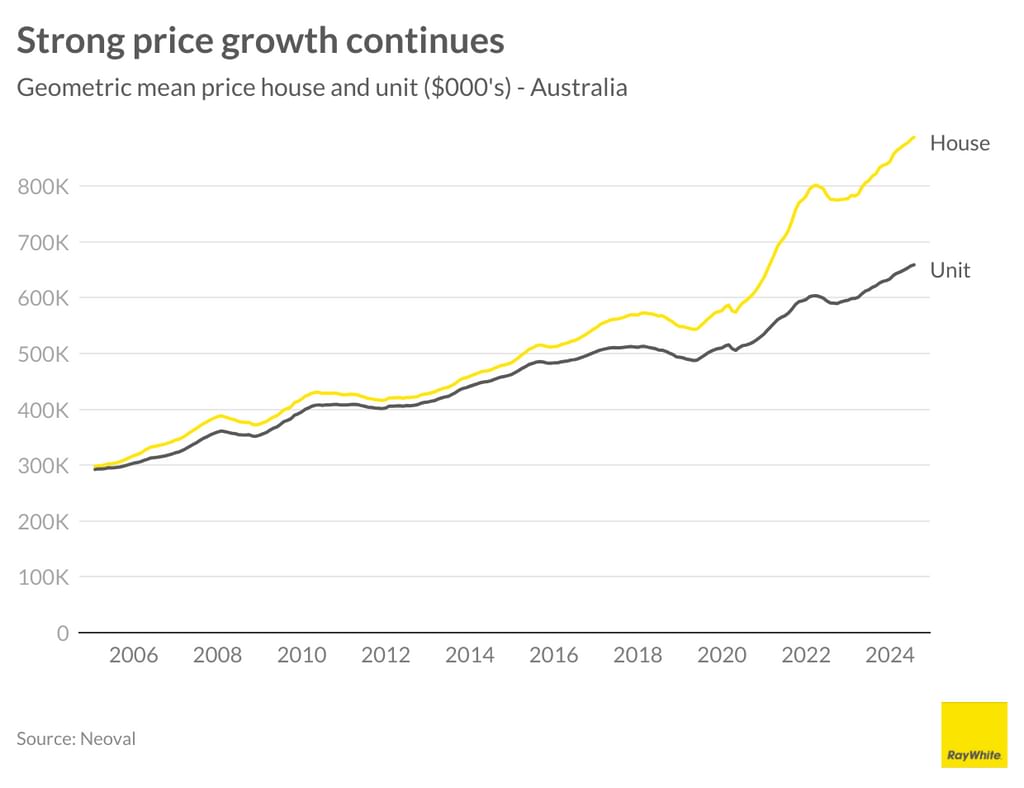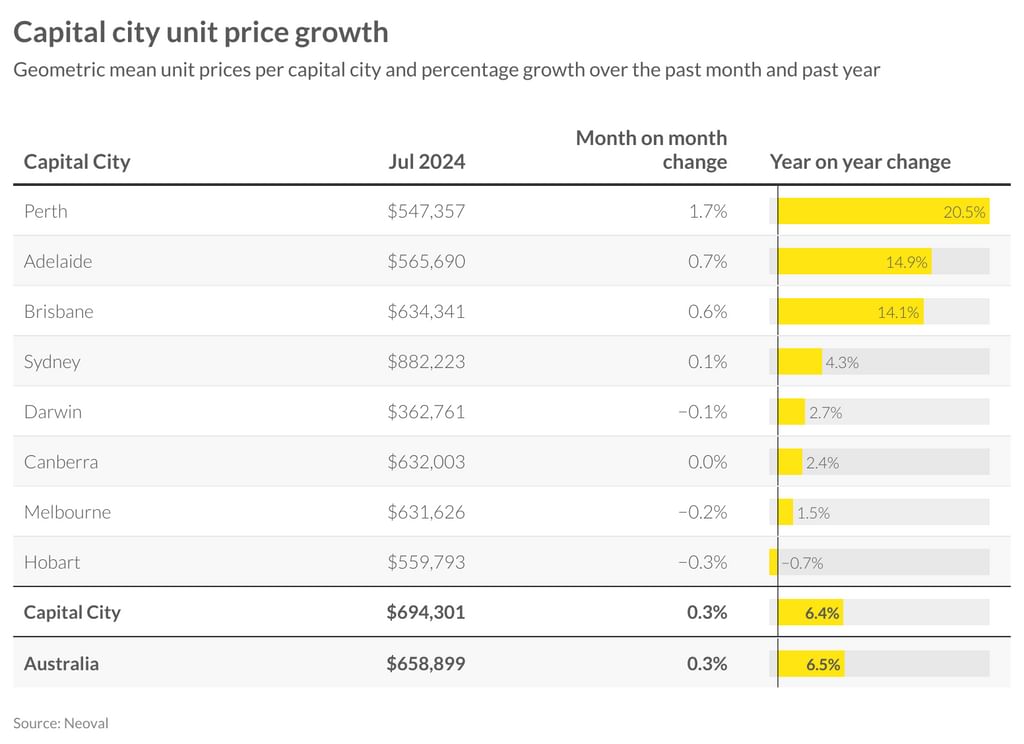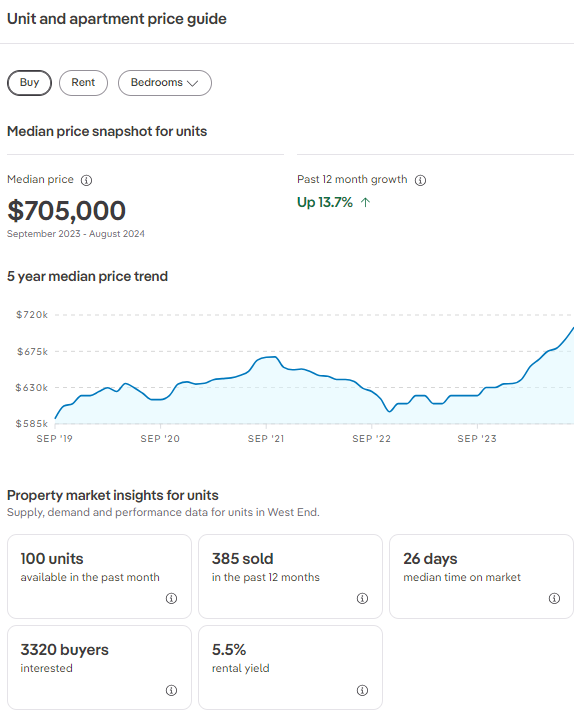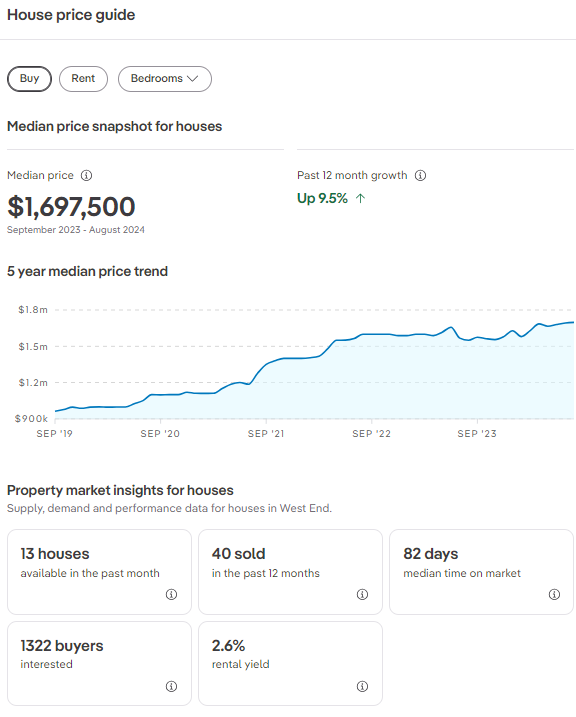Recent months have seen continued growth in Australian residential property values, albeit at a slower pace in July. Houses appreciated by 0.5 per cent, while units saw a slight 0.3 per cent monthly gain. The Australian property market is showing increasing variation across states and regions, reflecting growing differences in local economic conditions.
With interest rate cuts unlikely before 2025, market urgency and sentiment have cooled. This is expected to lead to fewer property listings and sales as buyers adopt a more cautious and deliberate approach to purchases. Over the past year, house prices have climbed 8.5 per cent, bringing the national median to $887,691. Unit prices have also risen, increasing by 6.5 per cent annually to reach a nationwide median of $658,899.

The past month witnessed a softening in price growth in many markets with the divergence in values across Australia widening. Melbourne and Hobart are recording weak results with Melbourne impacted by poor economic performance and lack of investment demand. Both markets recorded monthly declines of 0.1 per cent and 0.2 per cent respectively with Hobart showing price reductions over the year of 0.6 per cent.
Perth continues to run hot with the strongest monthly improvement of 2.2 per cent, bringing annual increases to over 25 per cent with a mean of $860,809. With limited construction activity across this market, competition to purchase stock is likely to continue despite a slowdown in population projections. Brisbane also benefited from similar fundamentals as Perth, however some moderation from the rapid increases has now occurred, growing 0.8 per cent this month to $971,496. Sydney activity has also slowed, growing 0.3 per cent on the month. The annual increase still sits at 6.5 per cent in the most expensive city in Australia, with a mean of $1,0601,645.

The unit market has mirrored trends in the housing sector, with Perth leading the pack. It recorded a 1.7 per cent monthly increase and over 20 per cent annual growth. Adelaide, known for its affordability, continues to perform well, rising 0.7 per cent this month to $565,690. Brisbane’s growth was more modest at 0.6 per cent, but its annual increase has been strong at 14.1 per cent, driven by high construction costs for new builds pushing up their economic values.
Sydney and Canberra saw minimal changes over the month. In contrast, Darwin, Melbourne, and Hobart experienced price declines of 0.1 per cent, 0.2 per cent, and 0.3 per cent respectively. Melbourne continues to see property investors exit the market due to high taxes, leading to increased listing volumes and a higher likelihood of short-term price reductions. Over the past year, Hobart is the only city to record a decrease in median prices, falling 0.7 per cent to $559,793.

Average West End Sale Prices August 2024
1 bed apartment $475,000 (Low $440,000 High $620,000)
2 bed apartment $750,000 (Low $604,000 High $1,085,000)
3 bed apartment $1,403,500 (Low $1,130,000 High $2,300,000)
House $1,697,500
West End Apartment Data – REA 3/9/2024

West End House Data – REA 3/9/2024
